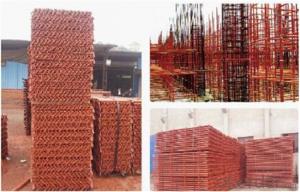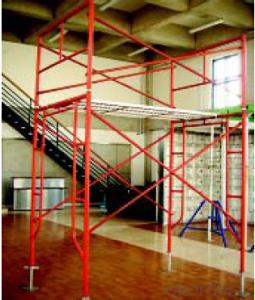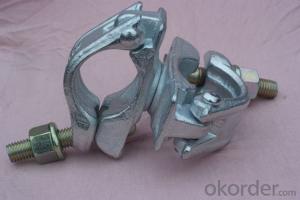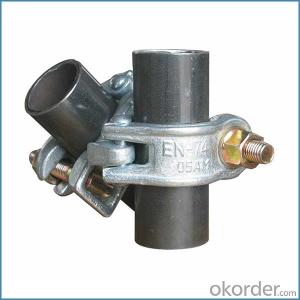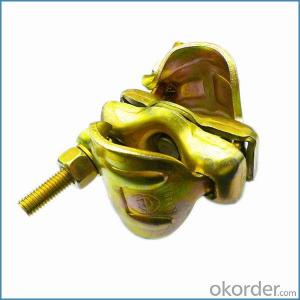Scaffold Board Retaining Coupler British Type for Sale
- Loading Port:
- Tianjin
- Payment Terms:
- TT OR LC
- Min Order Qty:
- 1000 kg
- Supply Capability:
- 100000 kg/month
OKorder Service Pledge
OKorder Financial Service
You Might Also Like
Scaffold Board Retaining Coupler British Type for Sale
Description
1.The scaffolding coupler is always used to connect the steel pipe as scaffolding system.
2.The often used coupler is swivel coupler and righ angle coupler .
3.We can provide types of scaffolding coupler according to your requirement.
4.Couoler can fix the 48.3mm scaffolding steel pipe tightly and make the whole scaffolding system more steadily.
5.Material:Q235 steel
6.Overall Size:48.3mm*48.3mm
7.Surface Finish: Galvanized/ Painted
8.Standard:BS1139,EN74
9.Package:25pcs/bag
10.Manufactuering as per customer requirements

Feature
(1)Excellent Anti-Breaking—Cold Pressed Steel
(2)Outstanding Resistance Deformation
(3)Strong Anti-Dropping Ability
(4)Longtime USe
(5)Qualtity Guaranteed
(6)OEM Service
Photo



Parameter
| Material | Q235,345steel |
| Size | 48.3mm*48.3mm |
| Surface finish | Galvanized |
| Weight | 1.1kg around |
| Standard | BS1139,EN74 |
| Package | 25pcs/bag,steel pallet |
| Manufacture | As per customer requirement |
| Market | Africa, South America, the Middle East and Asia |
FAQ
Q: Are you a factory or trading company?
We are a state-owned corporation in China,dealing with various kinds of building materials.We have our holding subsidiaries.
Q: Where is your factory located? How can I visit there?
Our factory is located all around China.
Q: Can I get some samples?
Sample is free, customer only pay freight for the first time.
Q: Delivery?
10-30days. (5-15 containers)
Any question,feel free to contact us.
- Q: Can steel tube couplers be used for scaffolding structures that need to support heavy loads at different heights?
- Yes, steel tube couplers can be used for scaffolding structures that need to support heavy loads at different heights. Steel tube couplers are specifically designed to provide a secure and reliable connection between scaffolding tubes, ensuring stability and strength. They are capable of withstanding the weight and pressure exerted by heavy loads, making them suitable for scaffolding structures that require support at varying heights.
- Q: I had my cartilage pierced at a studio with a needle [ not a gun ] 5 months ago.The bottom hole was pierced on the rim of my ear, but sadly a bit too close to the surface. My industrial bar fits fine but i am not happy with the placement anymore.Even when i wear dark jewelry in my ear you can see it through my skin. I'm scared that if i catch it it will tear because its not in the thickst bit of cartilage. The piercer obviously didn't know what he was doing because he didnt pierce it far back enough..I wish i had realised at the time but the fact that it was close to the surface wasnt noticable until someone mentioned it.I am wondering will the hole close up if i take out the jewelry and can i get it re pierced firther back because i still want an industrial..i also am wondering if i will be left with a noticable scar? can i get it re-pierced?and has anyone ever had the same kinda thing happen to them?thanks






